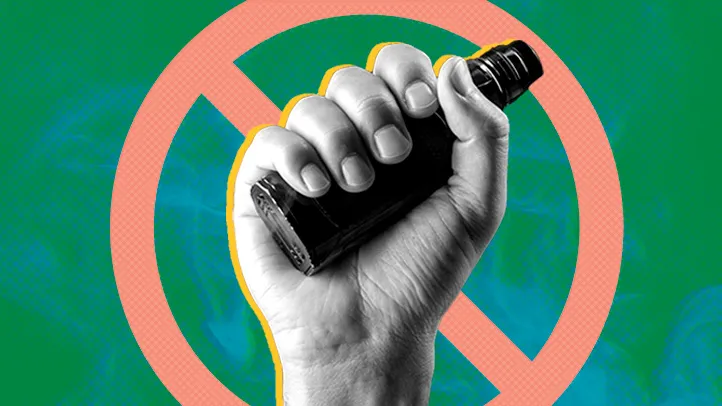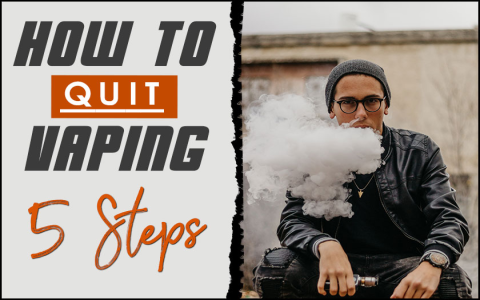Understanding the Challenge of Quitting E-cigarettes
Quitting electronic cigarettes, or vaping, involves overcoming both nicotine addiction and ingrained behavioral patterns. Nicotine is a highly addictive substance, and the act of vaping itself can become a deeply rooted habit, making cessation a significant challenge for many individuals.
Preparing to Quit Vaping
Strategic preparation significantly increases the likelihood of successfully quitting. Consider the following steps:

- Set a Quit Date: Choose a specific date to stop vaping. This provides a clear, tangible goal and allows time to prepare mentally and environmentally.
- Identify Triggers: Recognize situations, emotions, activities, or people that prompt the urge to vape. Develop strategies to avoid or manage these triggers effectively.
- Inform Your Support System: Let trusted friends, family, or colleagues know about your decision to quit. Their understanding and encouragement can be invaluable.
- Remove Vaping Paraphernalia: Dispose of all e-cigarettes, e-liquids, chargers, and related accessories to eliminate immediate temptations and create a vape-free environment.
Effective Quitting Strategies
Several methods can be employed to quit e-cigarettes. The most suitable approach often varies by individual preference and level of dependence:
- Abrupt Cessation (“Cold Turkey”): This involves stopping vaping suddenly and completely on the chosen quit date. While challenging, it can be effective for some.
- Gradual Reduction: This method involves systematically decreasing nicotine intake. This can be achieved by lowering the nicotine concentration in e-liquids over time, or by reducing the frequency and duration of vaping sessions.
- Nicotine Replacement Therapy (NRT): NRT products (e.g., patches, gum, lozenges, inhalers, nasal sprays) deliver controlled doses of nicotine without the harmful chemicals found in vape aerosol. This helps manage withdrawal symptoms. Consultation with a healthcare professional is recommended to determine appropriate use.
- Prescription Medications: Certain medications, such as Varenicline and Bupropion, are approved to aid smoking cessation and can also be effective for quitting vaping. These medications work by reducing cravings and withdrawal symptoms. They require a prescription and medical supervision.
- Behavioral Support and Counseling: Professional counseling, cognitive behavioral therapy (CBT), support groups (online or in-person), and quit-smoking apps can provide valuable strategies, coping mechanisms, and encouragement throughout the quitting process.
Managing Nicotine Withdrawal Symptoms
Withdrawal from nicotine is a common experience when quitting e-cigarettes. Symptoms can vary in intensity and duration but often include:
- Strong cravings for nicotine
- Irritability, frustration, or anger
- Anxiety or restlessness
- Difficulty concentrating
- Depressed mood or sadness
- Sleep disturbances (insomnia or excessive sleepiness)
- Increased appetite or weight gain
- Headaches
- Dizziness
Coping with Withdrawal Symptoms:
- Recognize and Accept: Understand that withdrawal symptoms are temporary and a sign that your body is recovering.
- Delay and Distract: When a craving hits, try to delay acting on it for a few minutes. Engage in a distracting activity like a short walk, a conversation, or a puzzle.
- Deep Breathing Exercises: Practice slow, deep breathing to manage stress and anxiety.
- Stay Hydrated: Drink plenty of water throughout the day.
- Engage in Physical Activity: Regular exercise can help reduce cravings, improve mood, and manage stress.
- Healthy Snacking: If experiencing increased appetite, opt for healthy snacks like fruits, vegetables, or nuts.
- Ensure Adequate Sleep: Maintain a regular sleep schedule and create a restful sleep environment.
Maintaining a Vape-Free Life
Staying quit is an ongoing process that requires commitment and adaptive strategies:
- Acknowledge and Celebrate Milestones: Recognize your progress and reward yourself for vape-free periods (e.g., one week, one month, one year).
- Manage Slips Proactively: If a lapse occurs (a single instance of vaping), do not view it as a complete failure. Recommit to your quit plan immediately. Analyze what triggered the slip and develop a strategy to prevent it from happening again.
- Develop Healthy Coping Mechanisms: Find new, healthy ways to manage stress, boredom, or social situations without resorting to vaping. This could include hobbies, exercise, mindfulness, or spending time with supportive individuals.
- Reinforce Reasons for Quitting: Regularly remind yourself of the benefits of being vape-free, such as improved health, financial savings, and increased freedom from addiction.
- Seek Ongoing Support if Needed: Do not hesitate to reach out for further support from healthcare professionals, counselors, or support groups if you find yourself struggling.










